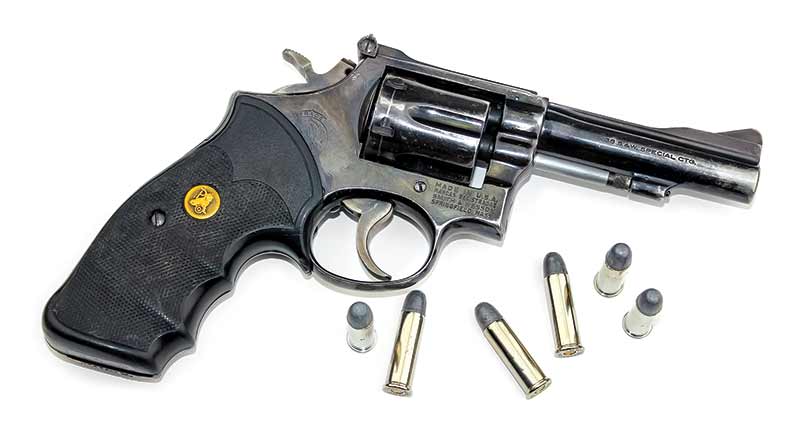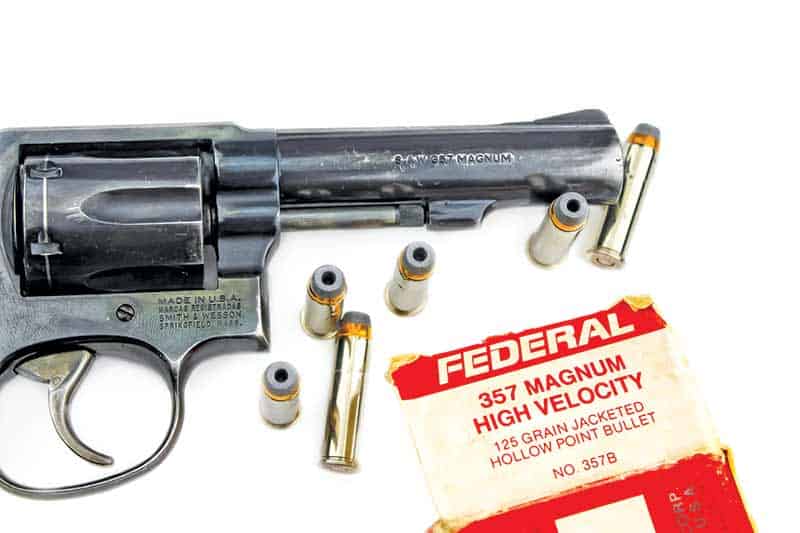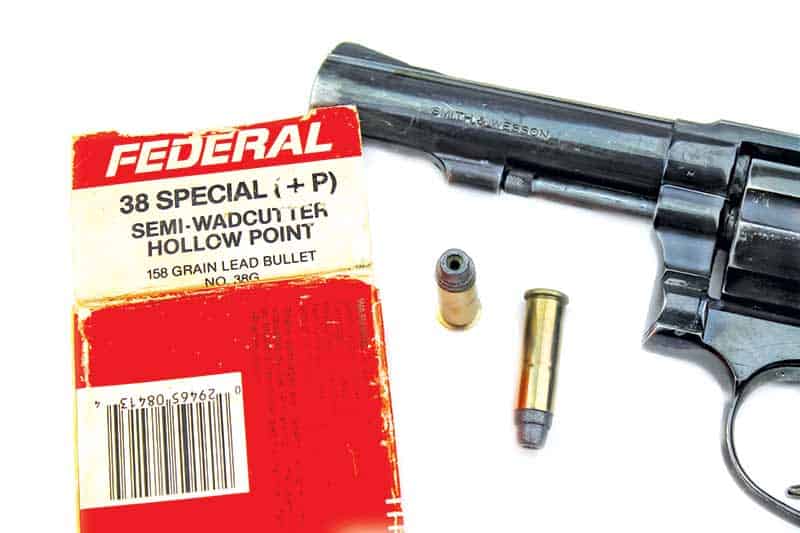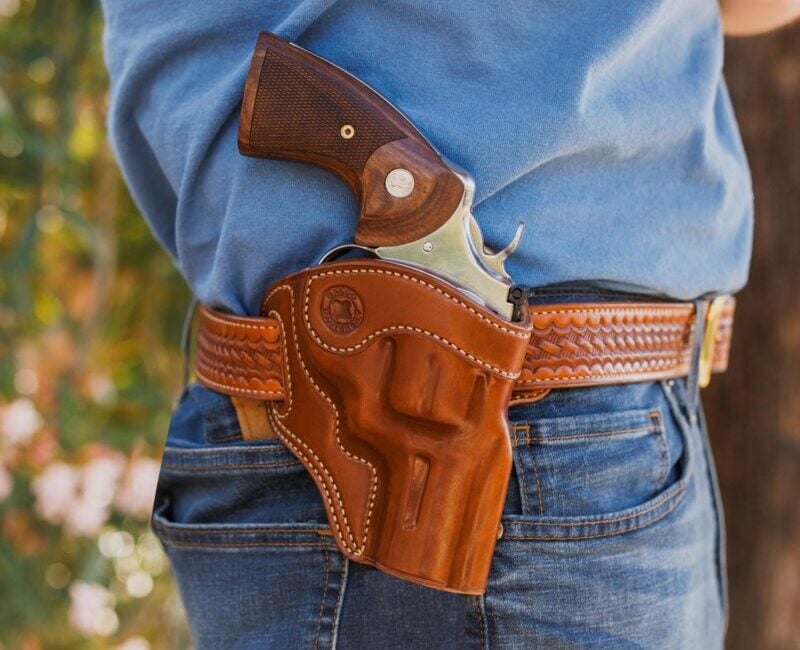What Cops Carried When Handgunner Began
1976 "We've Come A Long Way, Baby"
When Handgunner began in 1976, the service revolver was still king. Only one major civilian law enforcement entity adopted pistols as standard issue for all armed personnel: the Illinois State Police, in 1967, who chose the 9mm S&W Model 39.
Security holsters as we know them today were in their infancy. The most successful at the time was Bianchi’s B27, an updated version of the old break-front Berns-Martin. A few agencies still issued flap holsters: Houston PD and the state troopers of Illinois and Iowa, both of the latter placing them cross-draw. All eventually updated to more modern holsters, some sooner than later. Scabbards with simple retaining straps and thumb-breaks were still in wide use.
The Service Revolver, Then
S&W had been the dominant brand among police for the previous quarter century or so, but the Colt was still seen in many duty holsters. The Colorado State Patrol issued the deluxe Colt Python .357 Magnum as standard, the Colt Trooper .357 was the most commonly issued gun for Florida state troopers, and a great many street cops still wore the fixed-sight Official Police .38 Special discontinued in 1969.
The brightest new star on the service revolver horizon was the 1970 Ruger Security-Six. The guns were solid and price and time were right. S&W was owned by Bangor Punta, and it was not the best period for quality control. The Security-Six vaulted into second place in police popularity.
S&W remained the most widely issued with their K-Frame .38 Specials the most popular duty guns nationwide. NYPD mandated fixed-sight guns, and the Smith Model 10 was the dominant choice. Adjustable sight Model 15 Combat Masterpieces were standard issue in the Los Angeles area, both for LAPD and the LA County Sheriffs, and that state’s Highway Patrol took a similar route.
S&W’s big advance, quickly picked up by Ruger, was the stainless-steel revolver. In .38s, the fixed-sight Model 64 and the adjustable sight Model 67 made enormous sense due to their corrosion resistance. However, the gun to have was the Model 66 .357 Magnum.
Duty Ammo, Then
The theoretically ideal stainless Combat Magnum was problematic: stainless heats up faster than chrome-moly ordnance steel, and heated steel expands. Liability concerns led police who used .357s to train with full power, super-hot Magnums and early 66s locked up. By the time engineering changes cured the problem, it was the ’80s; Dick Baker at S&W had led the team that designed the larger, heavier duty L-Frame, and in ’85 Ruger followed suit with their brawny GP100.
The .357 Magnum round was on the rise. Fears of over-penetration that limited its police popularity were alleviated with the controversy-fraught acceptance of hollow point bullets, pioneered by Lee Jurras’ Super Vel and quickly copied by the big ammo makers. The bullets expanded and stayed in the body of the offender where they caused devastating damage. Many gunfights with the super-hot 125-grain .357 at 1,450 fps led Kentucky State Police troopers to dub it “the magic bullet,” and it quickly developed a reputation as a “manstopper.” Anyone who calls that an apocryphal story hasn’t talked to KSP troopers or Indianapolis PD cops who used it.
Meanwhile, hollow points brought the .38 Special up off its knees, particularly the 158-grain all-lead semi-wadcutter HP. Pioneered by Winchester and quickly followed by Federal and Remington, it was popularized as the “FBI Load” when the Bureau adopted it, and as the “Chicago Load” or the “Metro-Dade” or “St. Louis” load.
Autoloader reliability was an issue, and Remington took a leap forward with a line of JHPs whose ogive fed even in guns designed for ball ammo. While no big departments other than Illinois would be issued autos until the ’80s, some smaller agencies had them before ’76. The 115-grain 9mm and 185-grain .45 Remington JHPs expanded some, if not dynamically, and they fed. Texas Rangers had always had a soft spot for the 1911 in .45 and to some degree the .38 Super. LAPD’s pioneering SWAT team standardized on the 1911 .45 from its inception in the late ’60s (and through today). The most popular “hi-cap 9mm” was S&W’s Model 59, which also had a troubled history at the time; later generations would solve its reliability issues.
Training is an issue unto itself. It has since improved exponentially. No one then foresaw police duty pistols fitted with flashlights and carry optics, let alone “plastic pistols from foreign lands.” What a long, strange trip it’s been.








